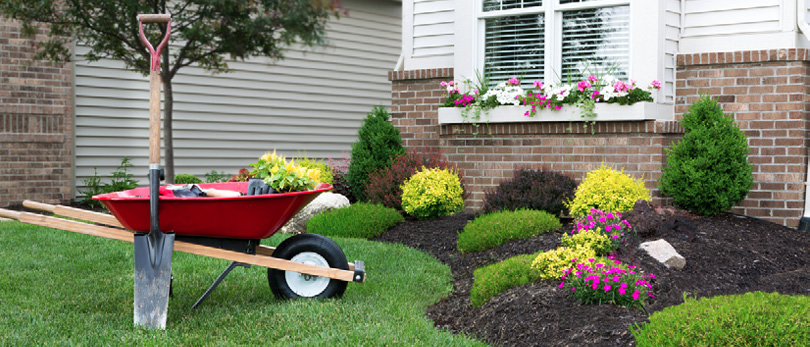Reap the health benefits of gardening—here are 10 tips for growing your horticultural skills
Beyond the visual appeal of lush plants and flowers, gardening can contribute to a healthy lifestyle. The physical exercise and calories burned lead to healthy weight and blood pressure levels, while the calm interactions with greenery can positively affect your mood and mental health.
You may be thinking, “My house plants never make it, how can I possibly keep flora alive outdoors?” Fear not, as keeping a garden fresh and healthy is not as hard as you might think. Consider these 10 tips for beginner green thumbs and you’ll be on the right path to becoming a successful horticulturist.
- Find the right spot. Make sure to choose a plot of land that’s within eyesight. The more you see of your garden, the more likely you’ll spend time caring for it.
- Account for sunlight. Before planting, observe how sunlight plays through your yard. Misjudging time in the sun for your plants is a common error by amateur gardeners. If you’re planning on planting fruits or vegetables, most of these need at least six hours of sunlight a day.
- Know your water source. It’s important to have easily accessible watering capabilities for your garden. Make sure your garden is close to your hose, so you don’t have to make multiple trips when watering. To tell if your plants need water, simply push your finger down about one inch into the soil. If it’s dry, your plants need a drink.
- Soil is key. One of the best ways to help your garden grow is to have nutrient-rich and well-drained soil. Add six to eight inches of this infused soil on top of whatever dirt is already in your backyard. Don’t hesitate to ask for help at your local gardening store before making a purchase.
- Pots are still an option. You don’t necessarily need a bed of soil to start a garden. If you live in a more urban setting, consider setting up some pots or containers on your deck, balcony or rooftop. It’s a great way for those without a lot of space to experience the joy of plant care.
- What to plant? Based on your climate, sun exposure and other potential growing conditions, choosing the right kind of plants is extremely important when starting a garden. Do your homework and learn what common garden plants will need to thrive.
- Know your zone. The USDA has divided the country into 13 different plant hardiness zones, based on a location’s minimum winter temperature. Last updated in 2012, a map is available to see what plants survive best in which locations. You can access the map and more information at planthardiness.ars.usda.gov.

- Frost is a killer. Plan your gardening season around the last and first frost of the year in your area. The Old Farmer’s Almanac has kept track of this information since 1792, and it can be accessed at almanac.com/gardening/frostdates. Planting too early can spell disaster for young sprouts, and not planning for fall or winter weather can result in cold-damage.
- Adding mulch. Applying a layer of 2- to 3-inch-deep mulch around your plants accomplishes two things: One, it helps reduce moisture loss through evaporation, meaning you’ll have to water less; and two, it will prevent weeds from growing near the base of your plants by blocking out sunlight.
- Plants may get hungry. In addition to quality soil, you may want to consider boosting your garden’s growth by giving them plant food. Like other living things, make sure not to overfeed, as this can be detrimental to your plants’ health. But when applied correctly, extra nutrition can help keep your plants healthy for longer.








